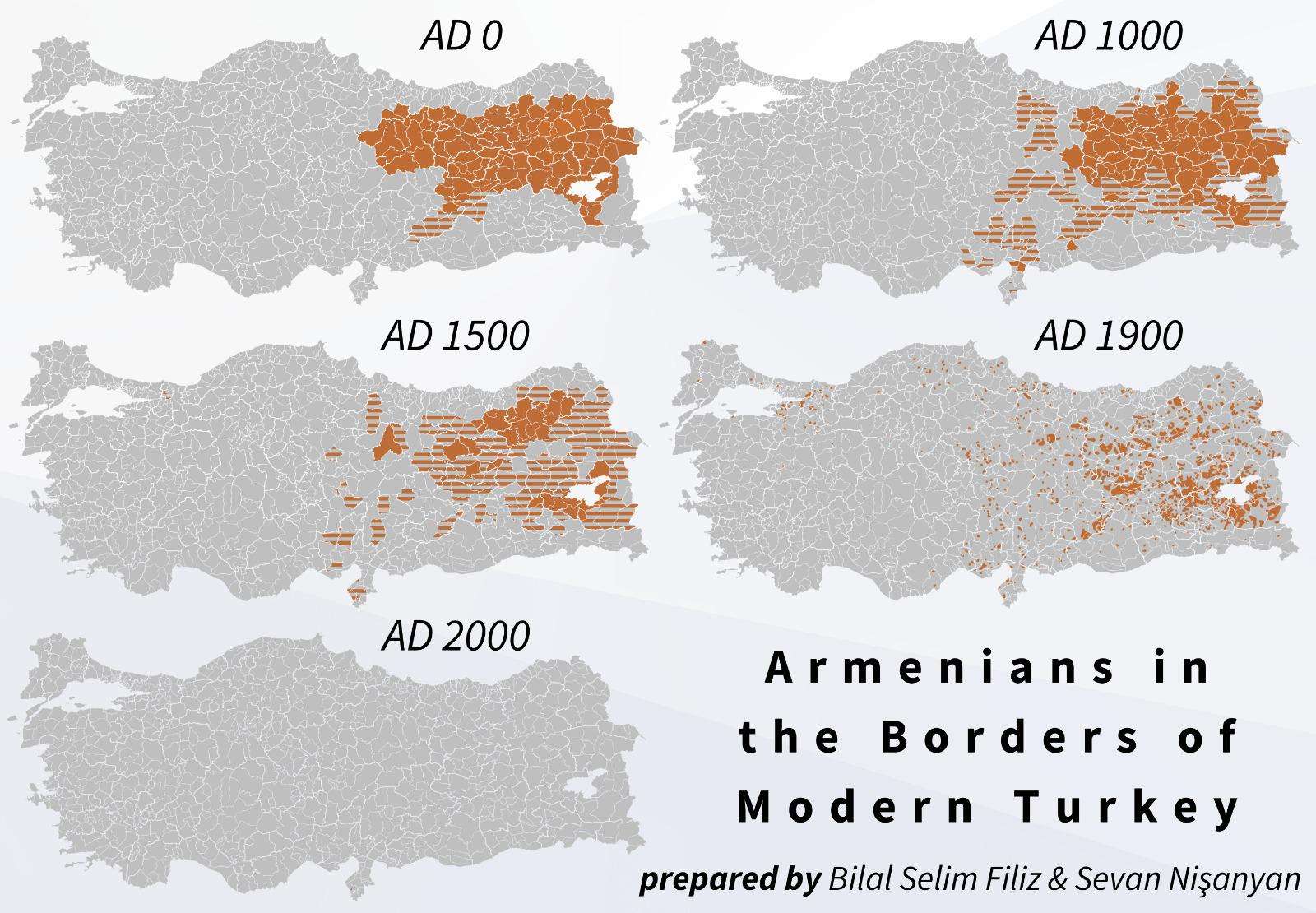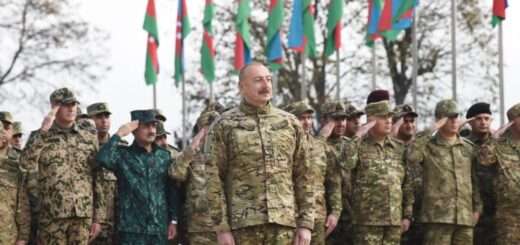Armenians in the Borders of Modern Turkey

The maps above show the historical distribution of Armenians within the modern borders of Turkey across different time periods.
- AD 1000: By this period, the Armenian presence remains strong in the eastern regions but begins to show expansion westward with some scattered areas of influence or settlement.
- AD 1500: The map shows further dispersal of Armenians, including regions beyond the eastern homeland. Armenian communities appear in central and western Anatolia, likely influenced by political changes and the rise of the Ottoman Empire.
- AD 1900: This map shows the most widespread distribution of Armenians. Communities are present across eastern, central, and western Anatolia, reflecting the vibrant Armenian population prior to the Armenian Genocide of 1915.
- AD 2000: By the modern era, there is almost no visible Armenian presence on the map, indicating the near elimination of the historical Armenian population within Turkey’s borders, a result of deportations, forced migrations and mass killings during and after 1915.
The Armenian Genocide was the systematic mass killing and expulsion of approximately 600,000 – 1.5 million Armenians by the Ottoman Empire during World War I, particularly between 1915 and 1917.
It is considered one of the first modern genocides and remains a highly controversial and politically sensitive topic, particularly between Turkey and Armenia.
Why Did It Happen?
Several historical, political, and social factors contributed to the genocide:
- Nationalism and Decline of the Ottoman Empire:
- By the late 19th and early 20th centuries, the Ottoman Empire was in decline, losing territory in Europe, North Africa, and the Middle East.
- Rising Turkish nationalism within the ruling Committee of Union and Progress (CUP), also known as the “Young Turks,” emphasized the need to unify the empire around Turkish identity and Islam, which alienated non-Turkish minorities like Armenians.
- Tensions Between Armenians and Ottoman Authorities:
- Armenians, a predominantly Christian ethnic group, had lived in the Ottoman Empire for centuries but faced systemic discrimination under its millet system, which categorized them as second-class citizens.
- In the late 19th century, Armenians began advocating for reforms and greater autonomy, influenced by broader nationalist movements in the region. Some Armenians engaged in resistance or aligned with Russia, the Ottoman Empire’s adversary.
- World War I as a Catalyst:
- During World War I, the Ottoman Empire was fighting on multiple fronts. Armenian communities were accused of collaborating with the Russian Empire, which had a large Armenian population and sought to expand into Ottoman territory.
- Using this pretext, the Ottoman leadership labeled Armenians as internal enemies and a threat to the state’s security.
- Young Turk Leadership:
- Leaders such as Talaat Pasha, Enver Pasha, and Djemal Pasha orchestrated a policy of ethnic cleansing to “solve the Armenian question” and create a homogenous Turkish state.
What Happened During the Genocide?
The genocide unfolded in several stages:
- Arrests and Executions:
- On April 24, 1915, hundreds of Armenian intellectuals and community leaders were arrested in Constantinople (modern Istanbul) and later executed. This date is commemorated as Armenian Genocide Remembrance Day.
- Deportations:
- Armenian populations were forcibly deported from their homes in eastern Anatolia and marched into the Syrian Desert. These “death marches” were characterized by extreme brutality, starvation, and exposure to the elements.
- Massacres:
- Mass executions occurred throughout Anatolia. Men were often separated and killed, while women and children were raped, enslaved, or killed.
- Destruction of Communities:
- Churches, cultural sites, and schools were destroyed, erasing centuries of Armenian presence in the region.
What Were the Results?
- Human Toll:
- It is estimated that 600,000 to 1.5 million Armenians were killed, and countless others were displaced.
- Survivors fled to various countries, leading to a global Armenian diaspora in regions such as the Middle East, Europe, and the Americas.
- Erasure of Armenian Presence in Anatolia:
- By the end of the genocide, the once-thriving Armenian population in eastern Anatolia was virtually wiped out. The demographic and cultural landscape of the region was permanently altered.
- Turkish Denial and International Recognition:
- The Turkish government has consistently denied that the events constituted a genocide, arguing that the deaths were a result of civil war, disease, and famine rather than a deliberate extermination.
- Many countries and scholars, however, recognize the Armenian Genocide as a historical fact.
- Legacy and Tensions:
- The genocide left a lasting scar on Armenian identity and Turkish-Armenian relations. Efforts to gain recognition for the genocide continue to be a major issue in Armenian diplomacy and diaspora advocacy.
- Impact on Genocide Prevention:
- The term “genocide” was coined by Raphael Lemkin in 1944, inspired in part by the atrocities committed against the Armenians.
- The Armenian Genocide is often studied as a case of state-sponsored ethnic cleansing and mass killing, influencing international human rights law.





